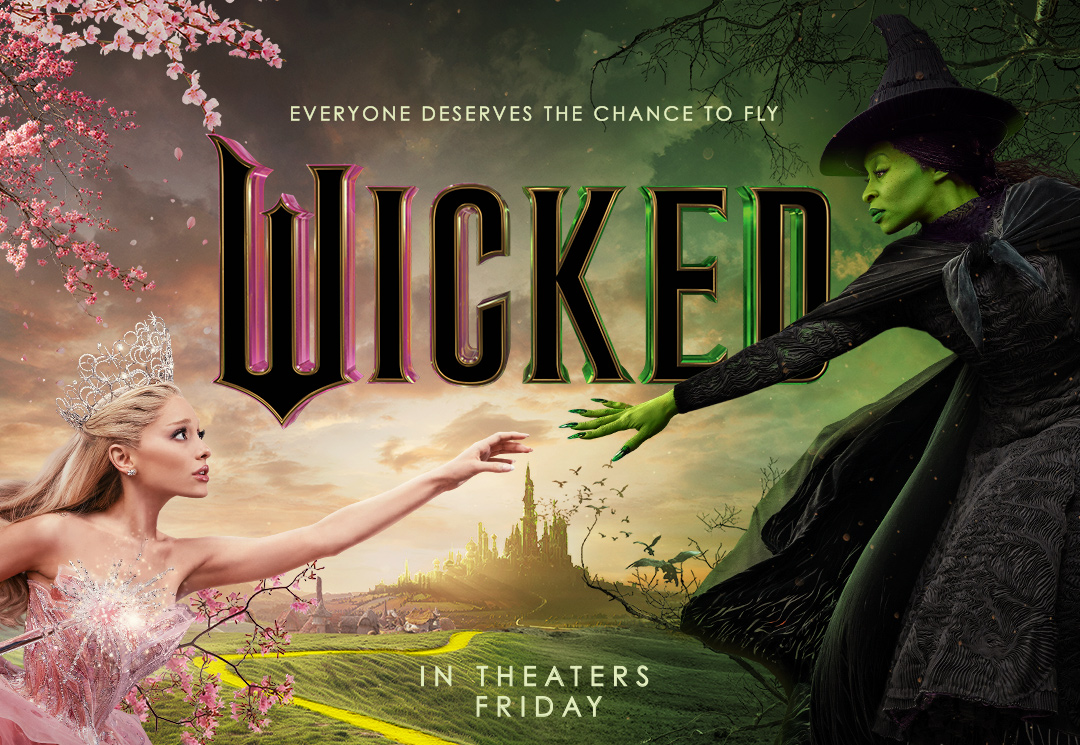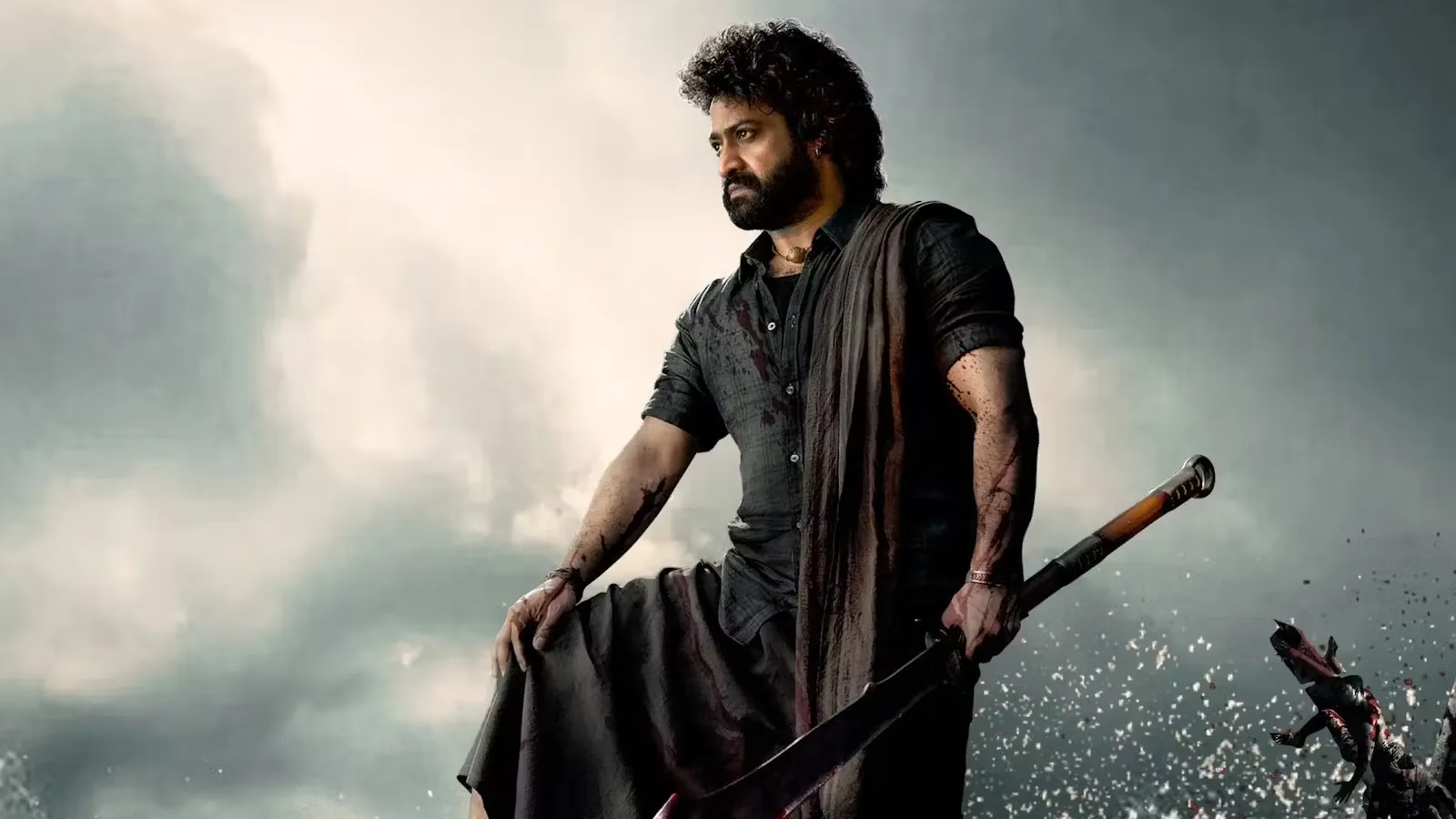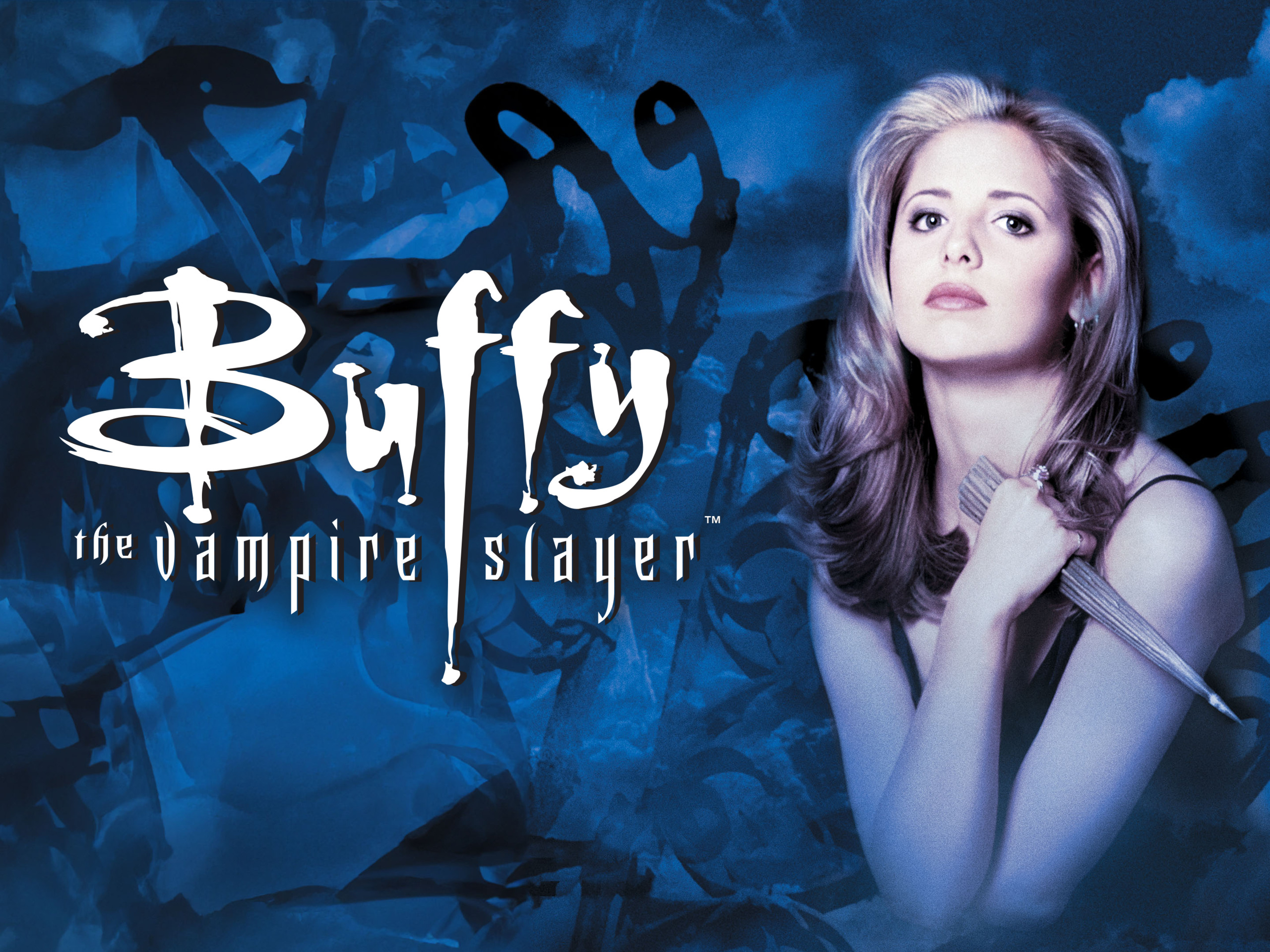Kerry Brougher, Director of the Academy Museum of Motion Pictures, today announced the details of the inaugural exhibitions that will be on view when the Museum opens in late 2019.
The first institution of its scope and scale devoted to the past, present, and future of cinema, the Academy Museum will open with a long-term exhibition that explores the evolution of film from its beginnings to its possible futures. Where Dreams Are Made: A Journey Inside the Movies (working title) will occupy two floors of the Museum’s iconic Saban Building—formerly known as the May Company building—and looks at the development of the art and science of motion pictures. Brougher also announced the institution’s first temporary exhibitions. The Museum will open with Hayao Miyazaki (working title), presented in collaboration with the filmmaker’s Studio Ghibli—the first major exhibition of his work presented in the United States.
This exhibition will be followed by Regeneration: Black Cinema 1900–1970 (Fall 2020), a groundbreaking exhibition that reveals the important and under-recognized history of African-American filmmakers in the development of American cinema. It will explore African-American representation in the motion picture from its advent to just beyond the Civil Rights era. The Museum’s 34-foot-high project space will open with a major work by the Tokyo-based interdisciplinary art collective teamLab. Additional exhibitions will include Making of: The Wizard of Oz, featuring elements that contributed to the creation of this iconic film, a history of the Academy Awards, and an Oscars experience.
Kerry Brougher said, “We want the Academy Museum to add to the public’s understanding of the evolution of the art and science of filmmaking around the world—to increase appreciation for this great art form and encourage people to examine the role of movies in society. At the same time, we want to bring to life the most important reason of all for caring about the movies—because they’re magic. That’s why we intend to transport our visitors into a world that exists somewhere between reality and illusion. Like the experience of watching a movie, a trip to the Museum will be a kind of waking dream in which visitors feel as if they’ve slipped through the screen to see how the magic is created.”
Ron Meyer, Chairman of the Board of the Academy Museum and Vice Chairman of NBCUniversal, said, “The Trustees and I are tremendously proud to see how the exhibitions of the Academy Museum are coming together. Thanks to the extraordinary creative team that Kerry has assembled, these experiences are going to be beautiful and engaging, thoughtful and surprising. The art of film, and our new Academy Museum, deserve nothing less.”
Dawn Hudson, CEO of the Academy of Motion Picture Arts and Sciences, said, “It’s been 90 years since the founders of the Academy proposed creating a museum of film in Los Angeles. How thrilling to be able to deliver on that dream. The Museum’s exhibitions are as expansive and imaginative as the movies we love. With its piazza and open spaces, the Museum will be a gathering place for film lovers and will invite people from all over the world to re-experience and deepen our collective love of this art form, accessible to all.”
John Bailey, President of the Academy’s Board of Governors, said, “The Academy Museum is the realization of a long-held Academy dream to preserve movie history and to bring it into the lives of filmmakers, scholars, young people, and the worldwide public. The great resources and dedicated work of the Margaret Herrick Library and the Academy Film Archive provide a foundation for the Museum’s extraordinary installations and changing exhibitions. This Museum, created and supported by working filmmakers, will present the story of the movies in ways beyond what a traditional historical film museum can offer.”
WHERE DREAMS ARE MADE: A JOURNEY INSIDE THE MOVIES
The Museum has set several interpretative goals for its exhibitions and programs: to convey the emotional and imaginative power of film, to offer visitors a look behind the screen into how movies evolved and are made, to explore the impact of cinema on our society and the culture at large, and to ensure film’s legacy as the great art form of our time.
Where Dreams Are Made will unfold over 30,000 square feet on two floors of the Museum. It brings together evocative settings, key objects from the Academy’s unparalleled collections and the growing collection of the Museum itself, and an array of film installations.
The journey begins in the Spielberg Family Gallery, located in the Grand Lobby, with the installation Making of: The Wizard of Oz. This classic 1939 film is notable for its engaging story, groundbreaking effects, glorious Technicolor world, original musical score—in particular the exquisite voice of Judy Garland—and a cast of unforgettable characters. Visitors will experience the magic of the movie and explore the process of its creation, from the script to production design drawings and sketches, costumes, and hair and makeup tests to the final versions of the characters themselves. It is here that Dorothy’s famed ruby slippers from the Museum’s collection will be found. Finally, evidence of this film’s everlasting impact illustrates the impressive legacy of The Wizard of Oz in popular culture.
Visitors will then ascend to the Wanda Gallery on the second floor, where they will enter a corridor that acts as a transition from the real world into the dream-space of cinema. They will emerge into the dramatic Magic and Motion gallery, which evokes the age of innovation and wonder in the 19th century during which inventors created optical illusions and animations with devices that delighted audiences by making still images move and light up, bringing scenes and tales to life.
The Lumière and Méliès gallery introduces a central theme of the exhibition—the interplay in cinema between realism and fantasy—as seen in the work of the brothers Louis and Auguste Lumière on one hand, and Georges Méliès on the other. Visitors will experience some of the earliest films ever projected, brief glimpses of daily life that were the forerunners of today’s documentaries and travelogues with which the Lumière brothers astonished audiences all over the world. The delightful “trick” films and dazzling moving image fantasies of stage-magician-turned-filmmaker Méliès prefigured the limitless potential of cinematic imagination even as the medium was still in its infancy.
The Story Films gallery inside the restored iconic golden cylinder of the Saban Building will demonstrate how filmmakers around the world quickly developed camera and editing techniques that unleashed this new medium’s potential to tell stories. Visitors will see examples of the first dramas, comedies, adventures, and other genres created for the screen, as well as the first animated short films. Women played significant roles both in front of and behind the camera during this period, and this gallery’s focus on early pioneers such as Alice Guy-Blaché and Lois Weber will not only explore their stories but also survey an industry in the process of being born.
Visitors will then enter a maze of monumental screens in the Light and Shadow gallery, which features sequences from the heyday of international silent film, revealing how inventive production design, acting styles, cinematographic effects, and lighting techniques brought mood, atmosphere, and emotion to cinema, elevating it to an art form and entrancing audiences around the world.
In the Modern Times section, visitors will encounter three simultaneous moments in cinema history that demonstrate moviemakers’ ability to respond to and impact society. The first was the rise of Hollywood and powerful stars like Mary Pickford and Charlie Chaplin, larger-than-life figures who often created identifiable, sympathetic representations of the “everyman.” The second was the artistic and political eruption of Soviet cinema, particularly advances in editing and montage pioneered by Sergei Eisenstein and Dziga Vertov, who used innovative approaches to capture the drama of daily life. The third was the development of independent filmmaking in America, which sought to counter the stereotypes often created by Hollywood, including films starring all-Black casts, predominantly distributed to Black audiences—otherwise known as “race films”—and production companies formed by notable filmmakers like Oscar Micheaux, Sessue Hayakawa, and Beatriz Michelena.
Modern Times leads visitors to the largest of the second-floor galleries, The Studio System, which follows the bustle of the Hollywood assembly line from the advent of synchronized talking pictures in 1927 to the decline of the studio system in the 1960s. This gallery explores the fascinating dichotomy of the era: the “dream” of Hollywood spectacle and the “factory” that made it possible. Here, objects from the Academy’s collection, such as a backdrop from Singin’ in the Rain (1952), the doors to Rick’s Café Américain from Casablanca (1942), and the typewriter used to write Alfred Hitchcock’s Psycho (1960), as well as familiar faces and scenes from the movies themselves will bring to life the myriad people and departments that came together to create studio movies of the time. Visitors will journey through the studio to explore the artistry and also the challenges of Hollywood during its “golden age.” This gallery also highlights many of the era’s most unforgettable stars, from the dancing talents of Fred Astaire, the Nicholas Brothers, and Rita Moreno to the dramatic presence of Humphrey Bogart, Gregory Peck, and Sidney Poitier, and icons of the screen like Greta Garbo, Dolores del Rio, and Marilyn Monroe.
As visitors move to the Museum’s third floor Rolex Gallery, they will enter into the Real World. This space will reveal how filmmakers responded to the tensions and challenges of a world changed by World War II. As filmmaking techniques became more and more adaptable, with lighter-weight and more widely available equipment, filmmakers everywhere took to the streets to capture their version of reality and share slices of life on screen. Whether creating fiction films or documentaries, they helped record and shape our history. Visitors will also encounter the rapid growth of independent cinema and the individual expression that characterized movements from Italian Neorealism and French New Wave to Indian Parallel Cinema and Brazilian Cinema Novo. But this is not only a story of the past: such approaches continue to impact and influence filmmaking to the present day.
An homage to the Stargate Corridor sequence from Stanley Kubrick’s 2001: A Space Odyssey (1968)—a sequence that brought together experimental film techniques and mainstream cinema—creates a mind-bending passageway to the final section of the exhibition: Imaginary World. With the advent of new tools and technologies, cinematic visions are now limited only by the filmmaker’s imagination. Visitors will be transported to unfamiliar worlds of the past, present, and future to encounter many of the most memorable and beloved movie characters, creatures, and destinations and to hear from the filmmakers themselves how they have pushed the boundaries of filmmaking to make the impossible possible. These films, despite their imagined lands and inhabitants, often provide a mirror that urges us look at ourselves and our own world in new ways.
An endeavor of this scope requires a multi-disciplinary creative team, such as the one assembled under the curatorial leadership of Kerry Brougher and Deborah Horowitz, Deputy Director of Creative Content and Programming. Intrinsic to the development of the vision for Where Dreams Are Made is Rick Carter, Oscar-winning production designer for Avatar (2009) and Lincoln (2012). The creative team for the exhibition includes the Museum’s curatorial staff—Doris Berger, Acting Head of Curatorial Affairs; Jessica Niebel, Exhibitions Curator; Bernardo Rondeau, Associate Curator and Head of Film Programs; J. Raul Guzman, Assistant Curator; Dara Jaffe, Assistant Curator; Robert Reneau, Film Program Coordinator; and Ana Santiago, Assistant Curator—as well as producer Brooke Breton, Avatar; sound designer Ben Burtt, Star Wars: Episode IV (1977), E.T. The Extra-Terrestrial (1982); staff from the Academy’s Margaret Herrick Library and Academy Film Archive, Academy governors and members, the Museum’s advisory committee on inclusion, and a range of film scholars and filmmakers. Gallagher & Associates, specialists in interpretive and experience design, are bringing their expertise to the project in order to realize the design and installations.
ACADEMY AWARDS HISTORY AND OSCARS EXPERIENCE
Since 1929, the Academy Awards have been the ultimate recognition of moviemaking excellence. Originally a dinner for industry insiders only, the ceremony has gradually become a global phenomenon watched by millions around the world. Visitors can trace the rich history of the Academy Awards and the story of the Oscar in an exhibition that includes favorite highlights, memorable winners’ speeches, private backstage moments, and rarely seen materials from the Academy’s collection. The exhibition will look back at the show, its glamour as well as its controversies, and the ways in which the Academy Awards ceremony has evolved and been a mirror of our culture. Visitors will then enter a gallery offering an Oscars experience only the Academy can provide, allowing visitors their own photo opportunity and Oscar moment.
TEMPORARY EXHIBITIONS
The Academy Museum will also feature a robust schedule of rotating temporary exhibitions in the fourth floor’s Marilyn and Jeffrey Katzenberg Gallery. These exhibitions will include retrospectives of major filmmakers, focused studies on aspects of filmmaking, artists’ projects, and explorations of the way movies reflect and influence society.
The Academy Museum’s opening temporary exhibition will be an unprecedented U.S. retrospective of famed Japanese filmmaker Hayao Miyazaki, curated by Jessica Niebel in collaboration with Studio Ghibli. Celebrated and admired around the world for his imagination, authorial vision, craftsmanship, and deeply humanistic values, Miyazaki continues to influence generations of filmmakers and film lovers. The exhibition will take visitors on a thematic journey through his cinematic worlds using original production materials from Studio Ghibli’s archives and features such films as My Neighbor Totoro (1988) and Spirited Away (2001). The exhibition will present more than 200 concept sketches, character designs, storyboards, layouts, cels, backgrounds, film clips, and immersive environments. A catalogue, film series, and public events will accompany the presentation, and unique Studio Ghibli merchandise will be sold at the Museum’s shop.
In the Museum’s Hurd Gallery—a 34-foot-high project space dedicated to the work of contemporary artists and filmmakers pushing the boundaries of moving image media—will be a dramatic interactive installation by teamLab, curated by Kerry Brougher and Deborah Horowitz. teamLab is an interdisciplinary art collective based in Tokyo comprising more than 500 artists, programmers, engineers, CG animators, mathematicians, and architects. Transcending Boundaries presents a site-specific, real-time, ever-changing environment that allows the viewer to engage directly with the artwork itself. teamLab’s work looks toward the expanded possibilities of moving image and digital technology.
Following Hayao Miyazaki, the Academy Museum will present Regeneration: Black Cinema 1900-1970 in Fall 2020. Regeneration will explore the visual culture of Black cinema in its manifold expressions from its early days to just beyond the Civil Rights movement. Co-curated by Doris Berger and Rhea Combs, Supervisory Curator of Photography and Film at the Smithsonian’s National Museum of African American History and Culture (NMAAHC), it will be the first exhibition of its kind—a research-driven, in-depth look at Black participation in American filmmaking.
In addition to offering a critical exploration of Hollywood productions, Regeneration will highlight the work of independent African-American filmmakers and create dialogues with visual artists. The exhibition’s goal is to redefine American film history as it elevates this under-represented aspect of artistic production and presents a more inclusive story. Regeneration is the proud recipient of the Sotheby’s Prize. The Sotheby’s Prize is an annual award that supports and encourages museums to break new ground. The grant aims to recognize curatorial excellence, and to facilitate exhibitions that explore overlooked or under-represented areas of art history. The Sotheby’s Prize is awarded by a jury comprising Sir Nicholas Serota, Donna De Salvo, Okwui Enwezor, Connie Butler, Emilie Gordenker, and chaired by Allan Schwartzman.
Regeneration’s curatorial team is collaborating with an advisory panel throughout the development of the exhibition. The panel brings expertise and experience deeply rooted in scholarship and filmmaking and includes Charles Burnett, filmmaker, Academy member; Ava DuVernay, filmmaker, Academy member; Michael B. Gillespie, Associate Professor, The City College of New York, Department Media Communication Arts; Shola Lynch, Curator, New York Public Library, Schomburg Center for Research in Black Culture, filmmaker, Academy member; Ron Magliozzi, Curator of Film, The Museum of Modern Art; Ellen C. Scott, Associate Professor and Head of Cinema and Media Studies, UCLA School of Theater, Film, and Television; and Jacqueline N. Stewart, Professor, The University of Chicago, Department of Cinema and Media Studies.
To encourage visitors to explore, dive deeper, and directly interact with exhibitions, collections, filmmakers, and fellow film lovers, the Museum’s public programs will include panel discussions, symposia, gallery talks, and other public events. The 288-seat Ted Mann Theater will offer daily thematic and exhibition-related screenings, and special showings and events will be held at the 1,000-seat David Geffen Theater. Film programming is overseen by Bernardo Rondeau. In addition, the Museum will offer an innovative range of digital engagement platforms and interactives, including a groundbreaking app.
Additional information about Hayao Miyazaki, Transcending Boundaries, Regeneration, and the Museum’s public programs and film screenings will be announced at a later date.

Movie
Gladiator 2 Builds On The Legacy Of Its Predecessor,

Gladiator 2 builds on the legacy of its predecessor, delivering a captivating story that honors the original while forging a compelling new path. The cast shines in their roles, with Paul Mescal delivering a powerhouse performance as Lucius, the now-grown son of Maximus. Mescal captures a blend of vulnerability and strength, embodying a character driven by both honor and revenge. Alongside him, Denzel Washington commands the screen, adding gravitas and depth to a key supporting role
The screenplay is a triumph, keeping the audience engaged at every turn. While the overarching story gives you a sense of where it’s headed, the journey remains unpredictable, and packed with twists. The film balances themes of legacy, vengeance, and redemption, weaving them seamlessly into the narrative.
Action sequences, particularly the gladiatorial combat, are visually pleasing. The fights are brutal and visceral, with just enough gore to feel authentic without veering into excess. Visually, Gladiator 2 is stunning. The production design, cinematography, and score come together to create a visceral and immersive experience.
As a follow-up to a beloved classic, Gladiator 2 meets expectations, proving to be both a thrilling spectacle and a worthy successor. It’s a 9/10—a tale of honor and legacy.
Movie
Wicked Soars As A Dazzling Spectacle

Jon M. Chu’s Wicked, the long-awaited cinematic adaptation of the Broadway musical, soars as a dazzling spectacle that captivates audiences with its lush visuals, heartfelt performances, and rich storytelling. The film, the first in a two-part series, delves into the origins of Elphaba and Glinda, exploring their unlikely friendship and the events that transform them into the Wicked Witch of the West and Glinda the Good.
Cynthia Erivo (Elphaba) and Ariana Grande (Glinda) lead the cast with exceptional performances. Erivo’s powerful vocals and nuanced portrayal of Elphaba’s internal struggles bring depth to the character. Grande, in her most notable film role to date, is both hilarious and heartfelt as Glinda, perfectly capturing her charm and comedic timing. Supporting performances by Jonathan Bailey (Fiyero), Michelle Yeoh (Madame Morrible), and Jeff Goldblum (the Wizard) add layers to the narrative, enriching the world of Oz with compelling subplots.
Chu, known for his work on Crazy Rich Asians and In the Heights, brings his signature style to Wicked, blending vibrant visuals with emotional resonance. The production design by Nathan Crowley is stunning, vividly rendering Oz with grandeur, from the Emerald City to Shiz University. Paul Tazewell’s costume design is equally striking, updating the Broadway look with cinematic flair. The score, by Stephen Schwartz and John Powell, retains iconic musical numbers like “Defying Gravity” while incorporating new arrangements that heighten their cinematic impact.
Critics have hailed Wicked as one of the best musical-to-film adaptations in decades, rivaling Chicago and Mamma Mia. Chu’s decision to split the adaptation into two parts allows for a deeper exploration of the story, giving audiences time to connect with the characters and their journeys. Fans of the Broadway show will appreciate its faithfulness to the source material, while newcomers will be enchanted by its universal themes of acceptance, ambition, and friendship.
With Wicked, Jon M. Chu has delivered a masterpiece that sets a new standard for musical adaptations. The film is a visual and emotional triumph, showcasing unforgettable performances and a meticulously crafted world. Whether you’re a fan of the original musical or new to the story, Wicked is a must-see cinematic event.
Rating: 3.5/5
Streaming
Movie Review: Devara Part 1 (Streaming on Netflix)

Devara Part 1 dives deep into the heart of coastal India, merging high-stakes action with rich, emotional storytelling. Directed by Koratala Siva, this movie delivers both visually arresting cinematography and a gritty, dramatic narrative that examines the impact of power, loyalty, and revenge. The film stars Jr. NTR as Devara, alongside Saif Ali Khan and Janhvi Kapoor, both in pivotal roles. With its mix of action, suspense, and drama, Devara has quickly become a must-watch on Netflix.
The film is set in a fictional coastal region, where Devara, played by Jr. NTR, emerges as a man caught in the crossfire of a world rife with ambition and betrayal. The narrative pivots around land issues and the power struggles within the community, which expose Devara’s journey from a common man to a feared figure within his circle. Saif Ali Khan’s antagonist is a complex and calculated character whose machinations add depth to the storyline, setting the stage for a high-stakes conflict with Devara.
The film uses classic Bollywood tropes of revenge and honor but explores them through a modern lens. Devara’s journey is marked by his raw emotional drive and relentless courage, and the character’s depth makes him a gripping protagonist. Janhvi Kapoor adds a softer, more vulnerable counterbalance as Devara’s love interest, providing relief amid the film’s intensity.
Jr. NTR shines in the title role, embodying Devara with both intensity and vulnerability. His transformation into this hardened figure is subtle and believable, allowing viewers to empathize with his struggles. Saif Ali Khan, as the antagonist, is charismatic yet menacing, bringing layers to his role that make him much more than a standard villain. Janhvi Kapoor, while not the primary focus, delivers a grounded performance, effectively conveying the emotional depth needed in a film as intense as this.
One of the strongest elements of Devara Part 1 is its cinematography. Siva and his team bring the coastal setting to life, with expansive shots that capture the rugged beauty of the region. Each scene is meticulously crafted to capture the landscape’s natural colors and textures, lending authenticity to the story. The high-quality production value, along with the tight pacing and impressive action sequences, ensures that the audience remains engaged from start to finish.
Korotala Siva’s direction keeps the narrative’s emotional core intact while focusing on action and drama. The way he layers tension and reveals character motives adds a degree of realism rarely seen in mainstream cinema.
At its core, Devara is about the moral complexities that arise when survival and loyalty collide. It tackles themes of power, corruption, and revenge, all within a tightly woven plot that never strays too far from the human element. The film also dives into social issues, shedding light on the systemic corruption affecting the lives of ordinary people in coastal India. Devara’s journey is one of self-discovery and confrontation with societal norms, and this depth keeps the film compelling beyond its action sequences.
The film also sets up exciting possibilities for Devara Part 2, hinting at an even deeper exploration of these themes, as the stakes rise and alliances shift.
Devara Part 1 combines strong performances, beautiful cinematography, and a gripping storyline. While it does lean on some familiar tropes, the story’s authenticity and Siva’s nuanced direction make it a worthwhile watch. The movie’s pacing, engaging plot twists, and character-driven drama make it hard to turn away.
Rating: 4.3/5 Devara Part 1 is a compelling drama that balances action and emotion, making it a standout in Netflix’s lineup. It’s perfect for viewers looking for a powerful storyline mixed with well-executed action. Highly recommended for fans of Bollywood cinema and anyone who appreciates stories with moral complexity.


